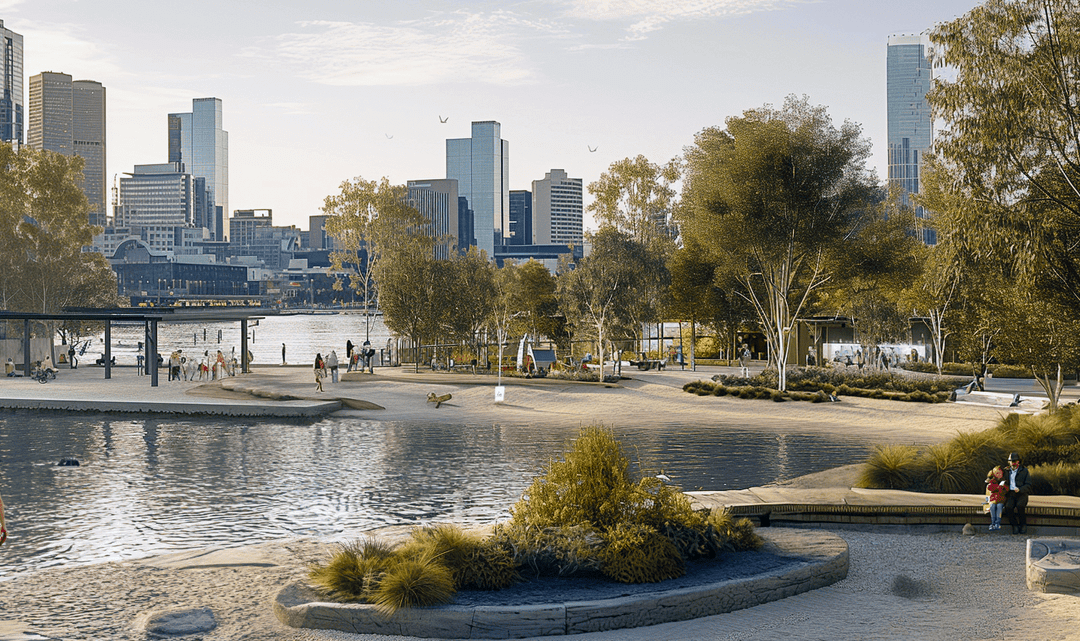Introduction
Waterside design in landscape architecture blends functionality, ecology, and aesthetics to transform riverbanks, lakeshores, canals, and waterfronts into vibrant, inclusive, and sustainable public spaces. With growing urban populations and increasing environmental challenges, the thoughtful design of these water-adjacent areas plays a crucial role in shaping healthier cities and reconnecting people with nature.
The Psychological and Social Value of Waterside Spaces
Water has an innate calming effect on the human mind. Studies in environmental psychology show that people feel more relaxed, focused, and uplifted in the presence of natural water bodies. Waterside landscapes provide urban dwellers with mental restoration, opportunities for leisure, and a place to reflect or socialize. In well-designed waterfronts, such as those in Copenhagen or Singapore, the public gathers not just to view the water but to interact with the space—through promenades, benches, cafés, and even floating platforms.
Moreover, these spaces become vital social nodes, encouraging community interaction and cultural events. A well-designed riverfront can host outdoor concerts, seasonal markets, and informal play, all while offering panoramic views and breathing space within a dense urban grid.
Ecological Integration and Environmental Resilience
Waterside design also plays a critical ecological role. Naturalized riverbanks, wetlands, and green buffers enhance biodiversity by providing habitats for birds, insects, and aquatic life. Unlike traditional concrete embankments, ecologically sensitive designs use native vegetation, permeable surfaces, and bioengineering to manage stormwater and reduce erosion.
In cities facing frequent flooding, such as Rotterdam or Jakarta, landscape architects are developing adaptive waterside infrastructures. These include terraced floodplains, amphibious parks, and retention basins that absorb excess rainwater. In this way, waterfront landscapes do more than beautify—they help cities adapt to climate change.
Case Study: The Cheonggyecheon Stream, Seoul
One of the most iconic examples of successful waterside design is the Cheonggyecheon Restoration Project in Seoul, South Korea. Originally covered by a highway, this historic stream was daylighted and transformed into a 10.9 km long urban park. The project not only revitalized the local environment but also reduced urban heat, improved air quality, and attracted millions of tourists. More importantly, it re-established a cultural connection between citizens and their water heritage.
Accessibility and Inclusivity in Design
For waterside designs to be truly successful, they must prioritize accessibility and inclusivity. Ramps, tactile paving for the visually impaired, shaded seating areas for the elderly, and child-safe zones should be standard features. The design should cater to a wide range of users—from joggers and cyclists to families, artists, and those simply seeking quiet.
Lighting, signage, and wayfinding must be intuitive and safe, especially at night. Flexible design elements, such as modular seating or movable stages, allow the space to adapt for different uses and seasons.
Artistic Expression and Cultural Identity
Waterside areas offer a canvas for public art, sculpture, and installations that reflect local identity. In places like the V&A Waterfront in Cape Town or the Docklands in Melbourne, art becomes part of the landscape, inviting interpretation and interaction. Murals, fountains, and kinetic sculptures breathe life into these environments, fostering pride and a sense of place.
Furthermore, integrating storytelling—through signage, art, or landscape forms—can preserve local narratives and indigenous heritage, turning a simple boardwalk into a journey through history and culture.
Challenges and Considerations
Despite their benefits, waterside projects come with challenges. Gentrification is a growing concern, where beautified waterfronts lead to rising property values and displacement of lower-income residents. It is essential for planners and architects to work closely with communities from the start, ensuring their needs and voices shape the project.
Additionally, maintenance and safety are long-term responsibilities. Water features can attract litter or algae blooms if not properly managed. Balancing ecological functions with human use requires ongoing collaboration between designers, ecologists, and city managers.
Conclusion
Waterside design in landscape architecture is far more than aesthetic enhancement—it’s a tool for environmental resilience, social well-being, and cultural expression. As cities grow and climate pressures intensify, designing with water becomes both an opportunity and an obligation. Landscape architects must rise to this challenge by creating accessible, adaptive, and inspiring waterfronts that celebrate the powerful connection between people and water.
Introduction
Welcome to WordPress. This is your first post. Edit or delete it, then start writing!

